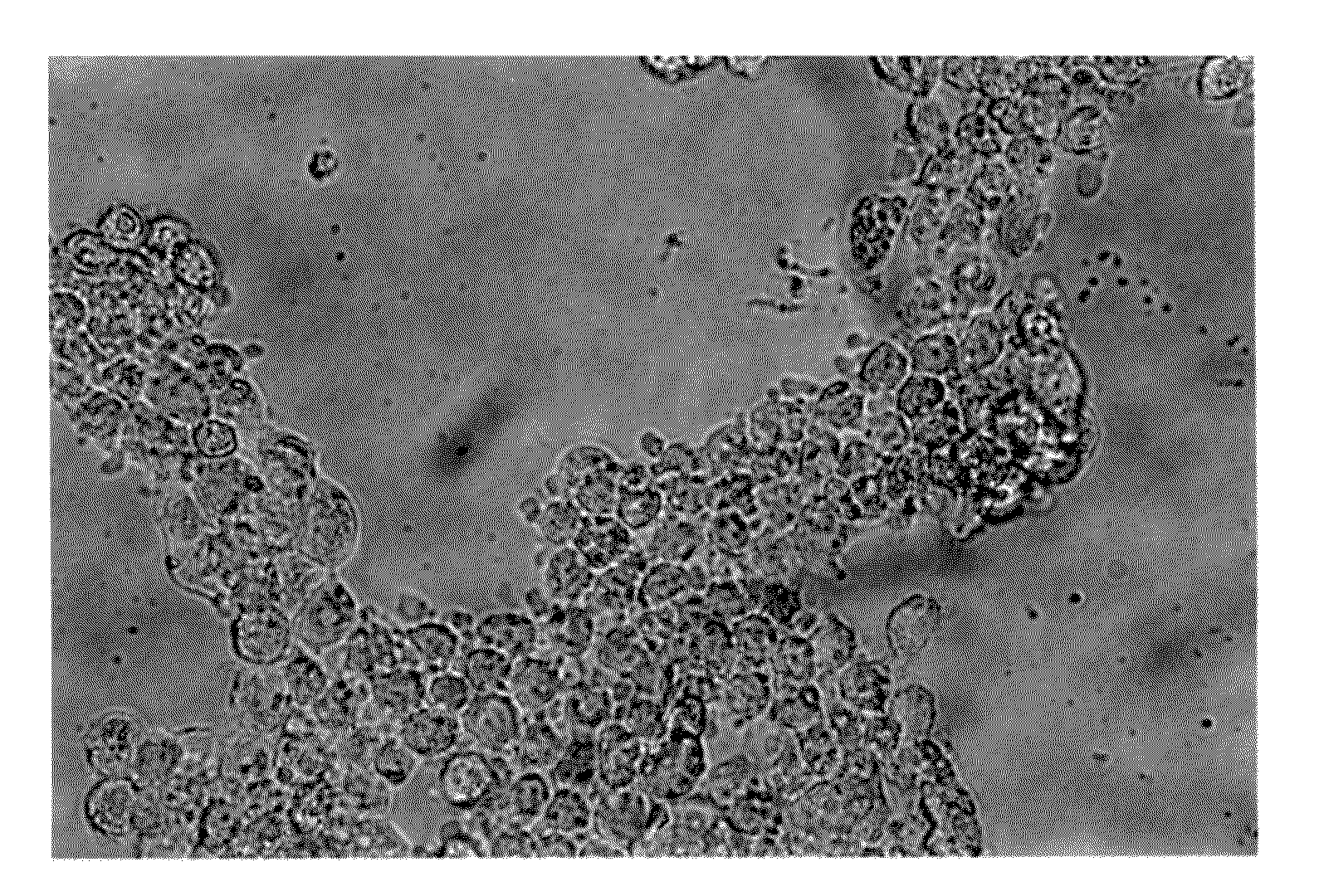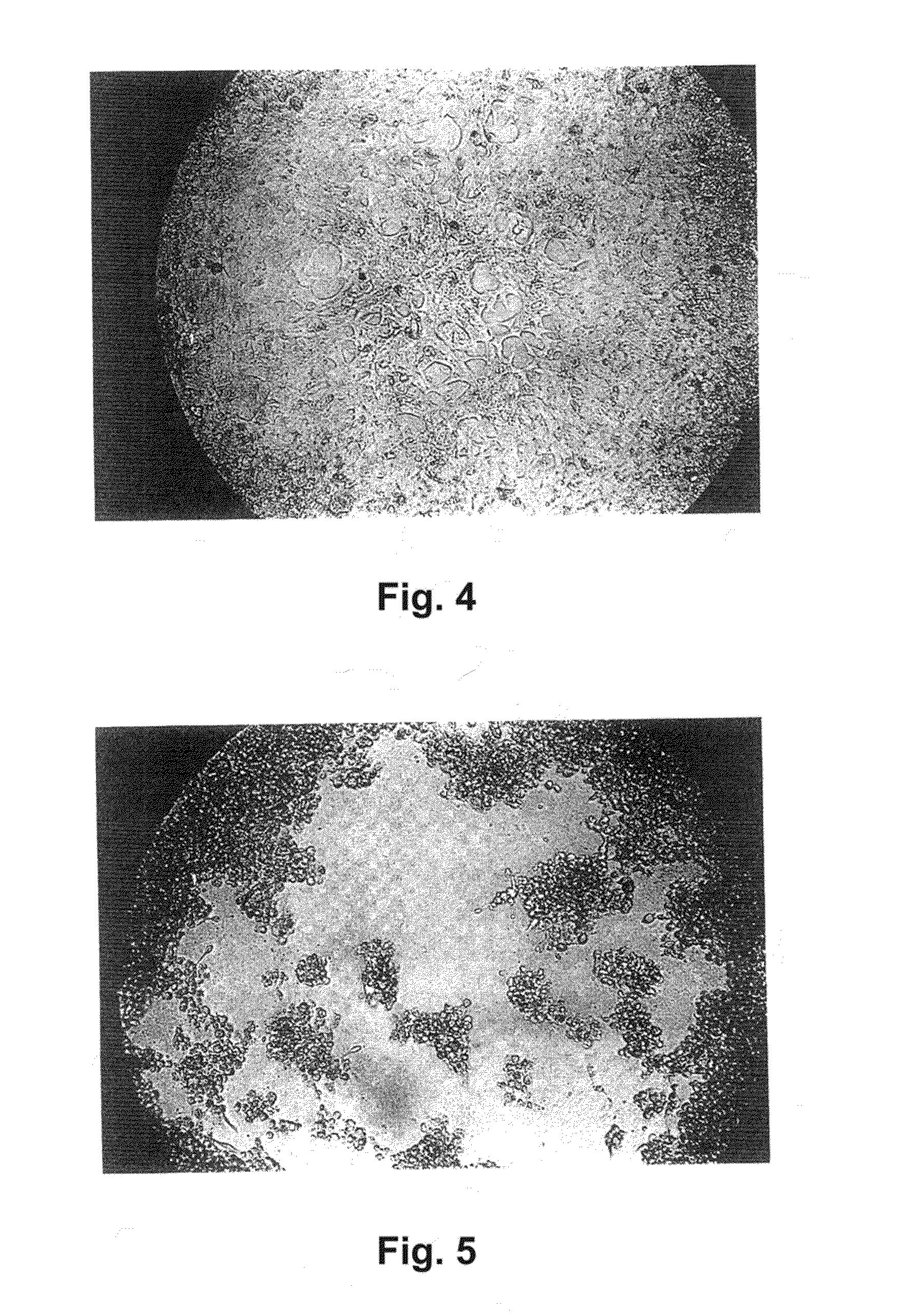Alpha 1-acid glycoprotein, alpha 2-hs glycoprotein, alpha 1-antitrypsin, and fragments thereof induce apoptosis in cancer cell lines
a technology of alpha 1acid glycoprotein and alpha 2hs glycoprotein, which is applied in the direction of peptide/protein ingredients, drug compositions, peptide sources, etc., can solve the problems of limited success in chemotherapy, ineffective approach to fight cancer that is dormant, and current treatment of cancer
- Summary
- Abstract
- Description
- Claims
- Application Information
AI Technical Summary
Benefits of technology
Problems solved by technology
Method used
Image
Examples
examples
A. Methods
1. Preparation of Condition Media
A. Preparation of XC Condition Medium for Isolation of Apogen P-1
[0074]Apogen P-1 was isolated from the conditioned medium of a cell line called XC, which was derived from a rat tumor (ATCC CCL 165). XC cells were first seeded in a roller bottle (Polystyrene, area surface=850 Cm2, Corning) in Dulbecco's Modification of Eagle's Medium (DMEM) containing CO2, 10% fetal bovine serum (FBS), non-essential amino acids, penicillin and streptomycin for 3 days. XC cells were then washed with PBS (3×100 ml) to remove serum and then grown in 100 ml of DMEM containing no FBS (with CO2), non-essential amino acids, penicillin and streptomycin) for 4 days. The conditioned medium was collected and clarified by centrifugation.
B. Preparation of C3H 10T1 / 2 Condition Medium for Isolation of Apogen P-2
[0075]Apogen P-2 was isolated from the conditioned medium of a cell line called C3H10T1 / 2, which was derived from a mouse embryo and was purchased from American Ty...
example
1. Molecular Cloning of the Bovine Fetuin Gene
[0144]Fetal bovine tissue was obtained commercially. mRNA was then isolated (Frederick, M. A. et al., “Short Protocols in Molecular Biology” pp. 5-12, John Wiley & Sons, 2nd Ed. 1992). Full length cDNA was reverse transcribed with poly(t) and a plasmid library constructed.
[0145]cDNA clones coding for fetuin were screened. The bovine fetuin gene was isolated by traditional methods and subcloned into pBluescript vector. The gene was confirmed by DNA sequencing.
[0146]The gene contains one open reading frame encoding 359 amino acid residues, which is homologous with other fetuin genes. The confirmed gene was ligated into vector pCRT7-NT vector and junction was confirmed by both restriction digestion and sequencing (Frederick, M. A. et al., “Short Protocols in Molecular Biology” p. 3, John Wiley & Sons, 2nd Ed. 1992). The gene was prepared from confirmed clone in E. coli TOP10 strain.
[0147]Over 10 different clones were identified. Protein exp...
PUM
| Property | Measurement | Unit |
|---|---|---|
| pore size | aaaaa | aaaaa |
| pH | aaaaa | aaaaa |
| pH | aaaaa | aaaaa |
Abstract
Description
Claims
Application Information
 Login to View More
Login to View More - R&D
- Intellectual Property
- Life Sciences
- Materials
- Tech Scout
- Unparalleled Data Quality
- Higher Quality Content
- 60% Fewer Hallucinations
Browse by: Latest US Patents, China's latest patents, Technical Efficacy Thesaurus, Application Domain, Technology Topic, Popular Technical Reports.
© 2025 PatSnap. All rights reserved.Legal|Privacy policy|Modern Slavery Act Transparency Statement|Sitemap|About US| Contact US: help@patsnap.com



